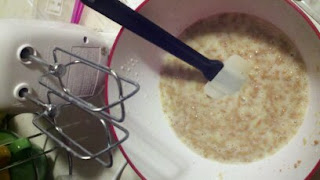Last week my local running store held a free recovery clinic to try out some products geared solely for helping you to recover from your long runs/races faster. I have some knee issues and I'm usually sufficiently sore after my long runs, so I figured this would be right up my alley. I personally think the best thing you can do is to educate yourself, never assume you know everything, because you probably don't. I also plan to run as long as I can and a way to insure that is to learn how I can stay injury free and recover faster.
I was pretty surprised that there were only a handful of us in attendance. There were mostly guys and the only two women. Maybe the date/time wasn't convenient for most? Who knows. Anywho, there were three vendor representatives there: Arctic Ease, CEP, and Skins - I'll give you a quick rundown (oh yeah, pun intended) on each.
Arctic Ease - This is a completely new product to the market that aims to solve the mobility and safety issues that result from icing post-run.
(Okay, let me backup just a second to cover why you need to ice, because this was new to me too, though complete common sense. When you run, or exercise in general, you're creating microscopic tears in your muscles which usually results in soreness and/or swelling. If you ice post-run you reduce the amount of swelling and soreness.)

Where Arctic Ease differs is that the product, basically a cold ace bandage stays at 59 degrees, cold enough to promote the same benefits as icing, not cold enough to induce frostbite (if you do ice with actual ice, please please follow the 20 on/off guidelines!) What's really cool about Arctic Ease is that you don't have to refrigerate it, it's cold right out of the bag and it's reusable you just add a little bit of water and reseal the bag. (I'm already thinking about Disney Princess Half for 2012 and this is a travel-friendly product for sure!) I scored a couple of free samples from the vendor rep and will definitely be picking some full-size product up during the Pittsburgh Marathon Expo next month.
CEP Compression - Next up was compression socks and no these aren't your grandmother's medical compression socks, though they are made by a company with experience in medical-grade compression. The fit is something you have to get used to: the foot is like a standard sock (only there's one specifically made for each of your feet so pay attention to the L and R when putting them on!), only compression starts at the ankle, where it's the tightest and loosens up as it goes up the calf. CEP sizes based on your calf size, rather than shoe size, to ensure the proper amount of compression. It's kind of like Golidlocks, too much and too little are not going to be beneficial, you really need it "just right" to get the full benefits.

(Okay, time for another interjection on the benefits of compression. Thanks to gravity, when you're upright, either standing or sitting, blood tends to pool more towards your feet and ankles. When you're running you're breaking lots of red blood cells in your feet and with poor circulation, that waste stays in your legs and feet. Sounds pleasant, right? Compression socks help to aid the blood flow and move that waste out of your legs faster, helping to alleviate or minimize soreness.)
Compression socks (well all compression apparel, really) can be worn before, during, and after a running event. The CEP rep recommended wearing these socks before your run especially if you're traveling a long distance to your race by car or by air. Wearing these during a race is a matter of preference, apparently. Some people like the added muscle support that they provide, while others find them too warm to run in. After the race, it is really recommended that you slip into these and wear them for a few hours to help your circulation.
The CEP socks are extremely lightweight and comfortable. I couldn't help myself but to buy a pair of the super bright pink ones! I absolutely love them;, I put them on after a run in my FiveFingers that really worked my calves and I had no soreness at all the next day. Now, these socks aren't exactly cheap, but they really are worth it. If you wear them every day you can expect them to last around 6 months, I'm hoping to get about a year out of them, but will probably pick up another pair, maybe the sleeves to wear with my FF!, at the Pitt Marathon Expo.
Skins - Continuing with the compression theme, skins produces compression apparel, including shirts, capris and tights. This company makes both an active (during the race) and a recovery (after the race) line. Now, I had a hard time imagining slipping in a full head-to-toe compression outfit after running a race. Personally, all I want to do is take a shower and get into the baggiest clothes I can find. Right now, Skins are a little out of my price range, but after trying compression socks I can see how they could be very beneficial. Maybe I'll try them in the future.
I definitely thought the clinic was a worthwhile investment of time and I highly recommend that any runner attend one near you or at least do some more research on running recovery. I certainly learned a lot and I'm going to try the icing trick after my next long run/race, though I'm shivering just thinking about it!
~Megan













